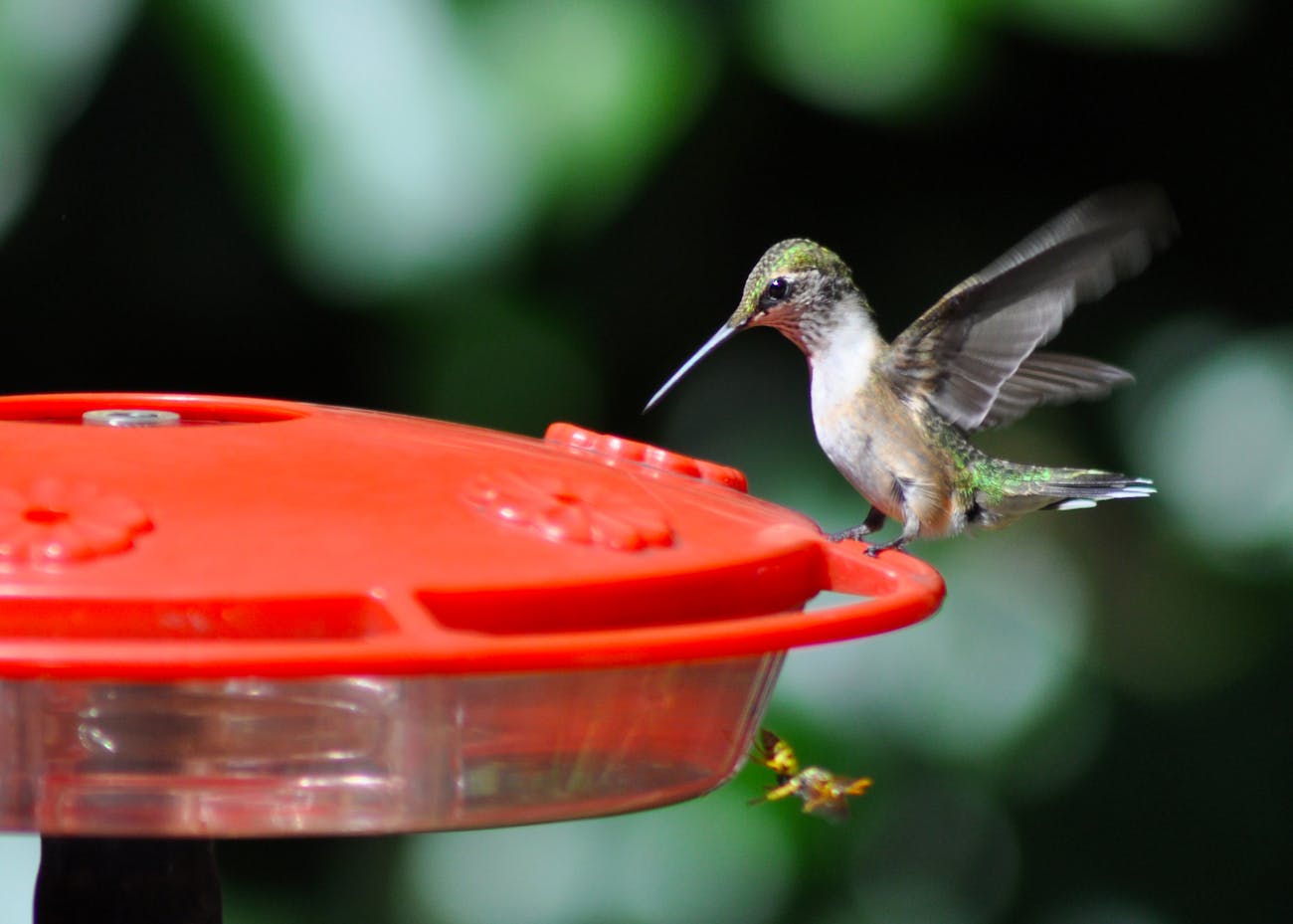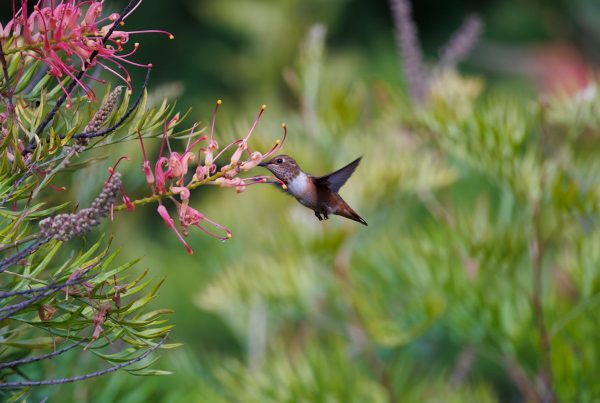
Hummingbirds Select Feeders
The sighting of a hummingbird at your feeder is a brief, colorful reward for any bird lover. We assume it’s the vibrant flash of red that serves as a sirenic beacon, luring these micro-dynamos toward our confections. Although color is definitely a factor, the complex decision-making process involved in a hummingbird’s choice of feeder is much more nuanced and interesting than just being drawn to a particular shade. Get ready to have your preconceived notions turned upside down as we dive into the surprisingly wide array of factors — beyond a bit of red — that influence where these clever little nectar slurpers decide to fill-up in your own backyard.
Citing the “How do hummingbirds choose a feeder?” is by its color, most notably red. Natural red, orange and pink colors strongly attract the attention of hummingbirds because they are often associated with nectar-rich flowers in the environment. This is part of the reason that most commercially constructed hummingbird feeders have red dye in their parts (feeding ports, bases, or other areas) to attract said birds.
However, the initial draw IS most frequently the visual cue of red, although other criteria come into account as a determinant of whether a hummingbird will prefer, and return to, a specific feeder over time. Imagine it as the first ad to draw their attention from far. But color is not the only consideration.
Quality and concentration of nectar
The quality of nectar and the concentration of nectar available are important factors that determine where hummingbirds feed. Hummingbirds have adapted to metabolize nectar from flowers effectively. This will normally be a sugar concentration of 20-25% sucrose, which is the concentration found in most flowers from nature, which they prefer to eat. This concentration strikes a fairly good balance between energy input and viscosity of the nectar (thicker, more concentrated nectar is more difficult to drink). Researchers have even studied this preference for moderate sweetness. They found that hummers prefer sucrose solutions in this 20–25% range to much higher or lower concentrations, and that they can detect small differences in sweetness. Their feeding mechanisms (lapping with their tongues) are optimally effective at these heavier concentrations, allowing them to consume the biggest quantity of energy per matter of time and exertion.
Hummingbirds learn and memorize feeder locations, regardless of color, and will return to reliable sources of food over the course of time. Their memories are superb and will preferentially come back to feeders that have given them in the past a reliable energy source of the proper quality and concentration. At first, they may sample multiple feeders to evaluate their quality of nectar. Feeders with less sugary or erratic nectar may have less return traffic.
Very low sugar concentration feeders offer less energy per visit, forcing hummingbirds to spend more time feeding to fulfill their high energy demands. They do not tend to return to these feeders as frequently unless other food sources are limited. Hummingbirds, on the other hand, are capable of feeding on more viscous solutions (to 30% or slightly above), but a higher concentration of sugar renders lapping of the nectar less efficient. It also possibly attracts more bees and wasps and those insects can compete for the nectar and discourage hummingbirds.
In fact, more highly concentrated solutions can be harmful to the birds. More research is needed, but excessively sweet nectar may be more difficult for them to metabolize and may cause dehydration if they don’t drink enough water, too. It also ferments more rapidly, and rancid nectar can be poisonous to hummingbirds.
The freshness of the sugar solution is also extremely important. Birds will avoid feeders with cloudy, moldy or fermented nectar, which is a sign of spoilage that can be harmful. They mostly use visual cues to tell if nectar is fresh. Cleaned and replenished feeders with fresh properly mixed sugar-water solutions will be far more enticing.
Red dye or artificial sweeteners are not necessary or beneficial for hummingbirds either. In fact, dyes can be bad, and artificial sweeteners have no energy. Nectar quality according to feeders with simple, transparent sugar-water.
Location and Visibility of the Feeder
To find the ideal place to hang a hummingbird feeder, you must think like a hummingbird. They’re going to be zipping around your garden and making snap decisions about whether they want to stick around or not. From a hummer’s perspective all that matters is that it can see the feeders, that they contain clean sugar-water solution and that they are in an area that provides protection and cover.
Making sure you hang hummingbird feeders in the best location is a matter of balancing the needs and safety of the birds with your own preference for ease of viewing. Keep feeders in places where hummingbirds should easily be able to see them as they fly through your outdoor spaces. Although they have fantastic eyesight and are drawn to bright colors, a bird feeder tucked into thick tufts of foliage might escape their notice. Placing feeders near natural nectar sources such as native bright flowers can encourage birds to locate feeders faster. Flowering plants in pots near the feeder can work as well.
Don’t put feeders directly in dense bushes or overgrown flower beds where cats or other potential predators (such as predatory birds that might prey on smaller birds) would have an easy place to hide and attack hummingbirds while they’re feeding. This can be accomplished by hanging feeders at least 5–6 feet off the ground, providing a challenge for ground predators to reach the birds. Finally, make sure there aren’t handy vantage points (like low-hanging branches or fences) near the feeder that predators might use to spy on and pounce on feeding hummingbirds.
Hanging feeders relatively near to trees or shrubs gives the little birds safe spots to perch, rest between feedings and scout their surroundings while avoiding dense predator cover immediately below. This also provides a quick exit if they are threatened. To keep the nectar cooler and slow fermentation and spoilage, it’s also important to position feeders in afternoon shade. Sugar-water spoils quickly if put in direct sun, which can make sugar-water unappetizing or dangerous for hummingbirds. A bit of dappled shade under a tree canopy is best.
So hummingbirds can be quite territorial. If you want to appeal to multiple species, put multiple feeders at least 10 to 20 feet apart and out of sight of one another if possible. That gives more birds room to eat instead of being chased and fighting all the time.
Feeder Design

Hummingbirds Feeders Design
As we have learnt, hummingbirds are picky about their feeding location and food quality. The construction of your hummingbird feeder faces the same examination. We do know they need to be red colored, but there are certain other things that will attract or repel the hummingbirds.
More than anything else, hummingbird feeders must be clean and this is probably the MOST important attribute of those feeders. Feeders should be easy to take apart and have smooth surfaces that are easy to scrub. In large part, wide-mouth openings are a big plus for reservoir cleaning and dishwasher-safe components can be a big plus for cleaning as well. In a properly designed feeder, nectar shouldn’t leak or drip, attracting unwanted insects like bees and ants and creating a sticky mess. Saucer-style feeders are often deemed more leak-resistant than inverted bottle types.
Recessed feeding ports, bee guards (plastic or mesh grids over the ports), or specific flower-shaped port designs can help keep bees and wasps with shorter tongues from accessing the nectar. An ant moat is a small cup positioned at the top of the feeder that can be filled with water to create a barrier ants cannot cross to get to the nectar. Most good feeders build this into the design.
Choose feeders made from rigid, UV-resistant and BPA-free plastic or glass. Glass is often easier to clean and may last longer; plastic is generally lighter and less likely to break. Large amounts of exposed metal parts that can heat up in the sun and potentially burn birds should also be avoided.
Perch feeders provide hummingbirds a place to rest while refueling, making it easy to conserve energy, as well as giving you a closer view! Larger hummingbird species in particular have a strong preference for feeders with perches. Some smaller species prefer to hover, so you will need to consider the species in your area.
Steer clear of feeders with elaborate, decorative designs that are hard to disassemble and clean thoroughly or are made with flimsy materials that break down quickly in the sun; and don’t use feeders with yellow parts, because yellow can attract bees and wasps.
Final Thoughts
Now you can probably see that it’s not as easy as just buying a red hummingbird feeder and sitting back to wait for them to come flocking in. Red is the obvious first attractant, but a hummingbird’s continued patronage is contingent on a mix of factors, they aren’t just landing on any feeder. They decide depending on all sorts of things and are clever with it, with sharp sensibilities. The key to remember is if their first positive experience feeding is at a quality feeder, it will remember it and will likely return year after year.
Feeders should be:
- They’re always clean and well maintained
- easy to spot
- close to cover and shade
- a safe distance from hazards
- rich in clean, fresh-squeezed nectar at optimal concentration
Color is usually the first calling card; the real success in retaining these beautiful visitors comes from the totality of enjoyment the feeder provides.










